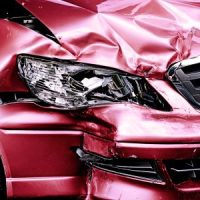Safer Cars Sustain More Damage In An Accident? Can That Be Possible?

If you are in a car accident, there will be damage to your car. When people see a lot of damage to a car after an accident, they often think “that must have been a serious accident.” Likewise, when looking at damage to a car that is relatively minor, many people’ s initial thoughts are “that was a minor accident.”
But are these assumptions actually true? Is there really a correlation between the amount of damage done to your car, and the severity of the accident (and thus, the severity of your injuries)?
Car Damage Doesn’t Legally Matter
Legally, there is nothing that limits the amount of your compensation after an accident, just because your car did or did not sustain damage. The insurance company or, at trial, the jury, are free to award you any amount of money that they see fit, even if your car did not sustain the slightest bit of damage in an accident.
But Practically, It Matters
But that’s the law, and that works differently than reality. In reality, juries–and thus, insurance companies–do look at the amount of damage to your car, when they are evaluating your case. And in trial, the amount of damage to your car can be very persuasive one way or the other.
It is not unusual for a defense attorney, in trial, to show the jury a picture of a car with very minor damage and ask the jury hypothetically “how could an accident that only caused this small amount of damage have injured the Plaintiff so badly?”
No Correlation
There actually is no known scientifically proven correlation between the amount or extent of a car’s damage, and the injury that happens to the passengers inside the car. In fact, there is some evidence to the contrary: that the less damage to a car, the more serious the accident may have been.
That’s because of absorption of impact. Most modern cars are actually designed to absorb impact by having the front or back of the cars “crush in”. They do this with “crumple zones” or areas that are supposed to crush in upon impact. Doing this prevents the force of the impact from moving the car violently, and thus, avoids the people inside from absorbing the brunt of the impact.
When the car is solid (without crumple zones), and the bumper or fender or hood or trunk stays rigid in an accident, the force of an impact is not absorbed by the car. That energy is transferred to the occupants inside the vehicle.
The end result is counterintuitive; the better condition the car is in after an accident, the worse condition the occupants may be in.
Proving this to the jury may require the testimony of experts, who can try to explain that the end result of a car with little damage after an accident, may be more severe injuries to the victims.
Call the Knoxville car accident lawyers at Fox Farley Willis & Burnette, PLLC, today if you were in a car accident, for help proving your case to the other side.
Source:
auto.howstuffworks.com/car-driving-safety/safety-regulatory-devices/crumple-zone.htm
